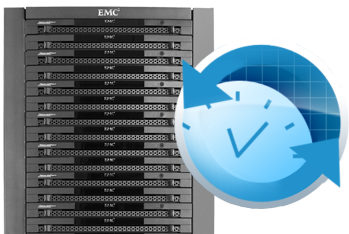Complex RAID Recoveries: What does that really mean?
Complex RAID Recoveries: What does that really mean?

When you look at most data recovery vendors' websites, they publicize the fact that they can handle "complex recoveries". But what is a complex recovery? Well, some people would define it as any recovery that requires the use of a clean room. While clean rooms should be staffed by qualified media surgeons, most of the procedures are becoming commonplace such as changing out head rack assemblies and swapping platters. That is not to diminish the talents of these highly skilled engineers, but to emphasize that in the top data recovery companies such procedures are performed daily. What about RAID devices? Surely recovering data from RAID configurations is far from simple. Absolutely. You need to make sure that the company you entrust your valuable data to have years of experience dealing with all types of RAID levels not just striping or mirroring or even RAID 5. There are enhanced versions of RAID such as 5E, 5EE, and 6E. Some hardware manufacturers also use advanced or proprietary RAIDs such as Drobo's BeyondRAID and EMC's Parity RAID. Let's take a step back. What is the main goal of media recovery? Simple: getting your data off of a corrupted or damaged media and returning it to you.
But is that data valid or even usable? Once again this is a big differentiator between data recovery companies. Take a recent case handled by ACE Data Recovery. A top supplier of automotive parts to the world's most prestigious vehicle manufacturers suffered a loss to business critical databases in one of its largest North American production facilities. Two of the three RAID volumes in the EMC RAID 5 arrays went offline. One of those volumes contained SQL Payrol System database. The first step in the data recovery process was to repair failed drives and transfer sector-by-sector images to stable media. Beyond the usual complexity of RAID data recovery, the unique data structure of this particular failed EMC AX array added another layer of complexity to the imaging process. The typical sector size of a hard drive is 512 bytes. On this model, the sectors were 520 bytes. In this situation most data recovery companies would have to spend an extensive period of time just to reconfigure and manually piece back together 520 byte sectors.
"Since ACE Data Recovery had already developed in-house proprietary software to handle custom sector sizes on unstable media" says Yevgeniy Tolkunov, CTO of ACE Data Group -"we were quickly able to merge the data into volumes. Our RAID engineering team successfully imaged all the drives in the EMC array and reconstructed all three volumes, two of which required special handling because of file system corruption." This is where most recovery companies would have stopped, not bothering to check the underlying SQL databases. ACE performed both a check for consistency of the database and a SQL torn-page verification to make sure it was not corrupted. Once it was determined the recovered volumes contained operational SQL databases, the data was made available to the company who was soon up and running again. Therefore the goal of media recovery is not simply getting your data back. It is verifying and perhaps even reconstructing the data to make sure it is in a usable format.
In conclusion, a complex recovery is usually a multi-step process involving different types of expertise:
1) Getting drives to a workable level to retrieve the data;
2) Reassembling that data based upon the type of RAID configuration;
3) Taking that extra step to assure that reconstructed data contains usable files.
It doesn't matter if it is SQL Server, a VMware Virtual Machine, Exchange Server, or a file system. The data that gets returned to you should be valid and functional. That's why you need to trust your data to a company with over 30 years of experience and the ability to handle any level of complexity: ACE Data Recovery.
